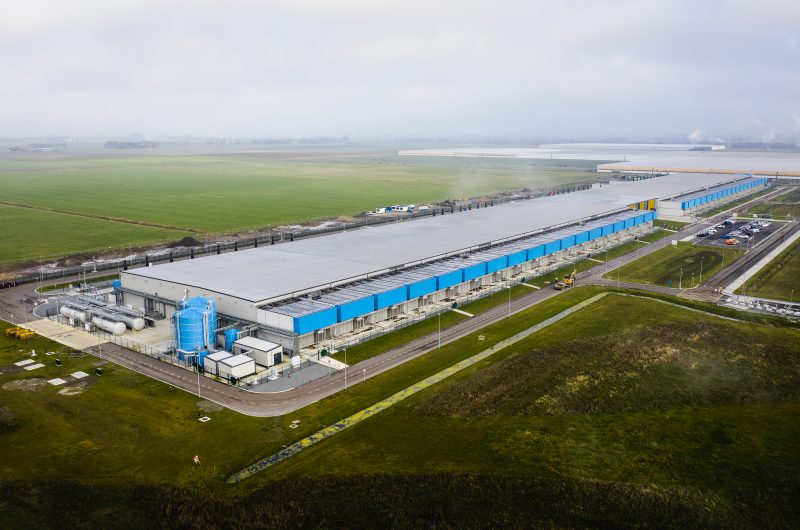- NASA gave astronauts their first operational spacesuits in the early 1960s. Since then, the designs have evolved considerably.
- Recently, astronaut Anne McClain encountered an issue with a suit that was introduced in 1983, leading NASA to cancel what would have been the first all-female spacewalk.
- New spacesuits are in development for exploring the moon, Mars, and beyond.
Space may be the final frontier, but it’s wildly inaccessible and downright deadly to any plucky human without a great spacesuit.
Fit also matters a lot – too much room can make the work more strenuous or even dangerous. That reality was especially clear last Friday, when astronauts Anne McClain and Nick Hague moved 300-lb batteries outside the International Space Station (ISS).
McClain believed that a large torso section was the best fit for her on Earth, but after her roughly 7-hour spacewalk (also called an extravehicular activity or EVA) in orbit on March 22, she changed her mind.
“Anne had thought she could use the large and decided after her EVA that she needed the medium,” Bob Jacobs, NASA’s deputy associate administrator for communications, told Business Insider in a tweet.
McClain was teed up to perform the first all-female spacewalk with Christina Koch this Friday, but Houston found a problem: Koch also needs a medium torso piece. Unfortunately, as NASA said on Monday, only one is ready for the event.
"There are additional medium size spacesuit segments on ISS," Jacobs added. "It's the configuration that would force a spacewalk delay."
The spacesuit model in question is called an Extravehicular Mobility Unit, and it was first introduced in 1983. But the very first operational spacesuits were introduced in the early 1960s to protect high-flying astronauts as they risk their lives in the name of space exploration.
From the silvery suits of the Mercury program to future commercial and government designs, here's how astronauts' spacesuits have evolved over six decades.
If all goes well, the next generation of spacesuits just might revolutionize human exploration of other worlds.
Mercury Suit (1961-1963)
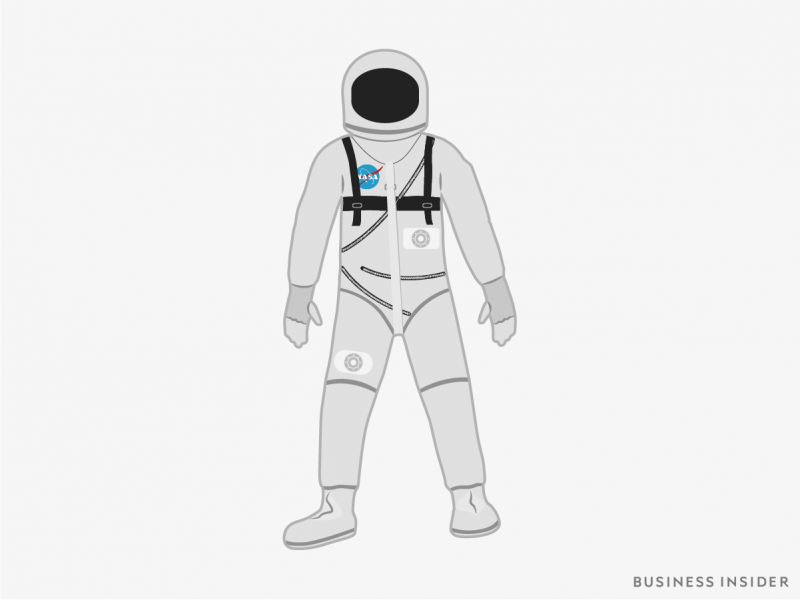
Project Mercury marked the first time US citizens ventured into orbit around Earth.
To protect the first astronauts from sudden pressure loss, NASA modified high-altitude jet-aircraft pressure suits from the US Navy. Each space suit had a layer of neoprene-coated nylon on the inside and aluminized nylon on the outside (to keep the suit's inner temperature as stable as possible).
Six astronauts flew into space wearing the suit before NASA retired it from service.
Gemini Suit (1965-1966)
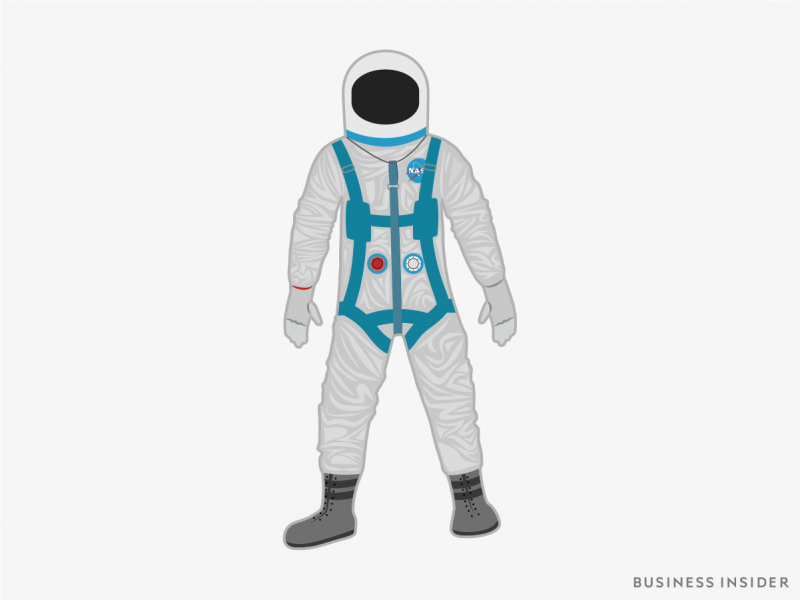
Gemini was NASA's second space program - and one with more ambitious goals. The Gemini capsule carried a two-astronaut crew into space, and had one (uncomfortable) mission that lasted two weeks.
The David Clark Company designed Gemini suits to be flexible when pressurized, and took extra steps to make them more comfortable than Mercury suits. For example, they could be connected to a portable air conditioner to keep the astronauts cool until they could hook up to the spacecraft's lines. These suits weighed 16-34 pounds.
Gemini Spacewalk Suit (1965-1966)

One type of Gemini suit, called G4C, was designed with NASA's first spacewalks in mind. Astronauts would open the hatch during these ventures and leave the safety of their vehicle to work in the vacuum of space.
To withstand the harsh space environment, the suit connected the astronauts to the spacecraft via a hose, which supplied them with oxygen. In case there was a problem, though, some variants of the suit provided up to 30 minutes of backup life support. The heaviest variant weighed about 34 pounds.
Apollo Spacewalk Suit (1967-1975)

The Apollo program brought astronauts to the moon, and it was no walk in the park. The astronauts needed more protection than either the Gemini or Mercury suits could offer.
The first people to walk the moon required a shield against fine regolith (dust as sharp as glass); protection from wild temperature swings from sun to shade; the flexibility to install gear and pick up moon rocks; and the ability to last for hours away from a spacecraft.
The suit came with a dozen layers of fabric, thick boots, and a robust life-support system. Each weighed more than 180 pounds on Earth, but just one-sixth as much in the moon's weaker gravity field.
First Space Shuttle Flight Suit (1981)

A mission called STS-1 - short for Space Transportation System-1 - was the first orbital spaceflight of NASA's space shuttle program.
Columbia, the first 100-ton orbiter, carried a two-astronaut crew into space and orbited Earth 37 times before reentering the atmosphere and gliding back to a runway. Astronauts weren't venturing outside, so they only wore an emergency ejection escape suit, which (like the Mercury suit) was a modified version of a US Air Force high-altitude pressure suit.
Extravehicular Mobility Unit (1983-present)

Astronauts of the space-shuttle era would work regularly in space to maintain satellites as well as construct and maintain the International Space Station (ISS).
They needed a workhorse spacewalk suit for such tasks, so NASA created the Extravehicular Mobility Unit. This 14-layer pressurized suit could withstand the harsh void of space and keep astronauts alive for more than eight hours. Fully loaded with gear and supplies, it could weigh nearly 320 pounds on Earth.
NASA also tested a jetpack-like device for the EMU, called a Manned Maneuvering Unit, that allowed astronauts to fly around free and untethered. People on board the ISS today use an advanced version of EMUs to maintain the the space station.
However, only 11 of the 18 original EMUs exist (four of which are on the space station), and a 2017 report by NASA said the suits "have far outlasted" their 15-year lifespan.
Space Shuttle Flight Suit (1988-2011)

The suit that astronauts wore during the Space Shuttle program is sometimes called a "pumpkin suit" for its bright orange color. The suit is equipped with gloves on disconnecting lock rings on the wrist, liquid cooling, improved ventilation, and extra layers of insulation.
Sokol Launch and Entry Suit (present)

The sharp, blue-lined spacesuit you see many astronauts wearing today is actually a Russian suit called the Sokol or "Falcon" spacesuit.
The 22-pound suit is pretty similar to the space shuttle flight suit, though it's used to protect people who fly inside Russia's Soyuz spacecraft (which NASA pays an increasingly hefty sum to use for its own astronauts' travel to and from the space station).
SpaceX Crew Dragon Flight Suit (expected in 2019)

NASA currently pays more than $80 million per round-trip to and from the International Space Station. But it's hoping to lower costs by investing in US commercial companies to provide a "space taxi" service.
One of those companies is Elon Musk's SpaceX, which designed a slick new spacesuit to protect astronauts who will fly aboard its Crew Dragon spacecraft to the ISS (and perhaps around the moon).
"It took us three years ... to make a spacesuit that looks good and works," Musk said in February 2018. Musk already flew a dummy toward Mars in one of the suits, and hopes to fly the first people in them before the end of 2019.
Boeing CST-100 Starliner Flight Suit (expected in 2019)

Boeing is the second company NASA is paying for space taxi services. Its 12-pound, bright blue suit is designed for the CST-100 Starliner spacecraft and is full of features to make it comfortable and mobile under pressure. That includes a helmet attached with a thick, air-tight zipper (no heavy or bulky neck ring required).
Boeing hopes to fly its first astronauts in late 2019 and certify its whole launch system for regular use by early 2020.
Z-2 Planetary Surface Spacesuit (perhaps in the 2030s)
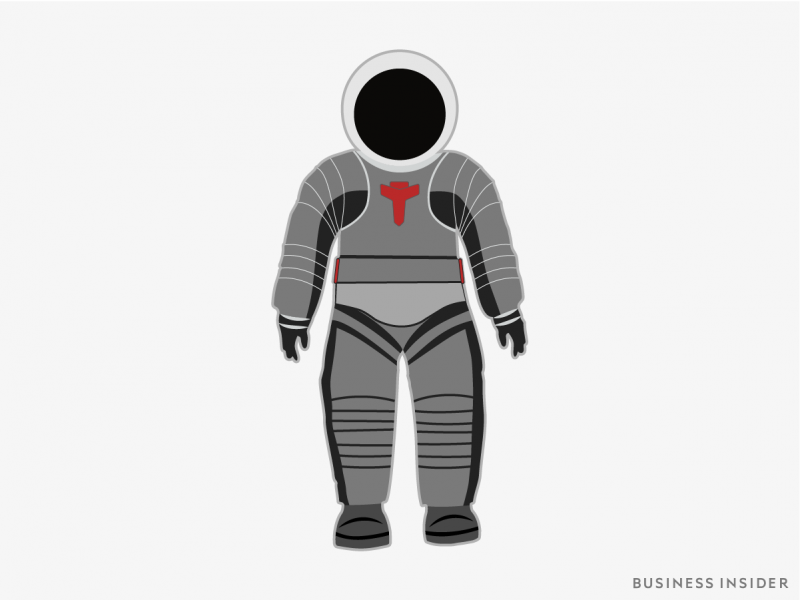
As NASA continues to push the boundaries of human space exploration - it hopes to reach Mars in the 2030s - it needs to develop even more advanced suits to be worn both inside and outside of spacecraft.
The Z-2 suit is the space agency's lightweight, high-durability design for working on the moon or Mars. In it, astronauts could explore, collect samples, and maneuver in and out of habitats and rovers, and fairly easily take it on and off.
"Adjustable shoulder and waist sizing features maximize the range of crewmember sizes who can fit into any single suit," NASA said.
Spider Flyer-Walker Spacesuit (Date unknown)
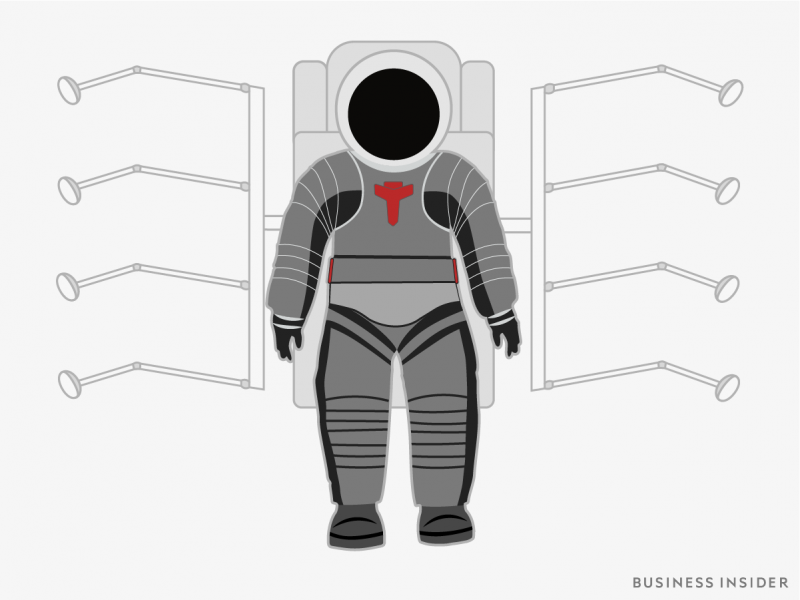
In addition to exploring new planets, astronauts may one day land on far-away moons. One plan championed by Lockheed Martin has people landing on Phobos, a small Martian moon. Its gravitational pull is less than a fraction of a percent of Earth's, though, so "landing" is relative.
To grab onto Phobos - which may harbor a lot of ice that could be turned into rocket fuel - Lockheed Martin has proposed the spider flyer-walker: an eight-legged, rocket-powered spacesuit that can crawl, walk, or hop across the surface.
NASA has yet to incorporate the suit into its plans, but it's a good representation of how spacesuits may continue to evolve to meet the intense needs of space exploration in the future.
This story has been updated with new information. It was originally published at 10:35 a.m. ET on March 18, 2018.
Dragan Radovanovic and Ali Sundermier contributed to the story.








